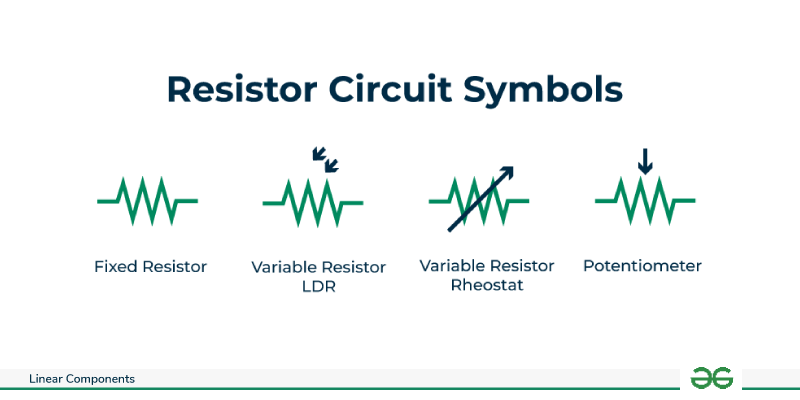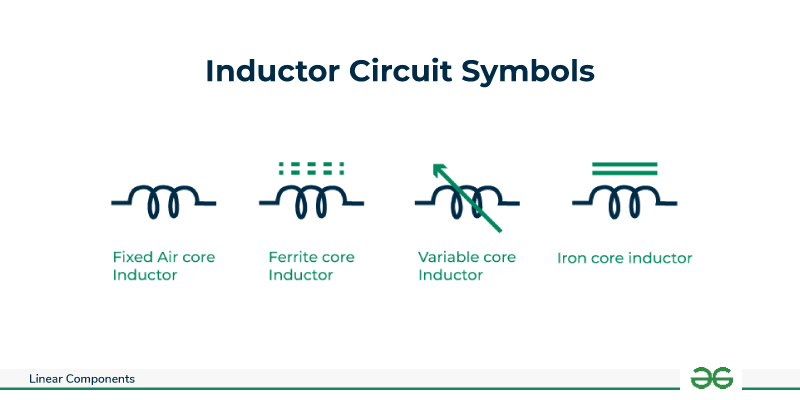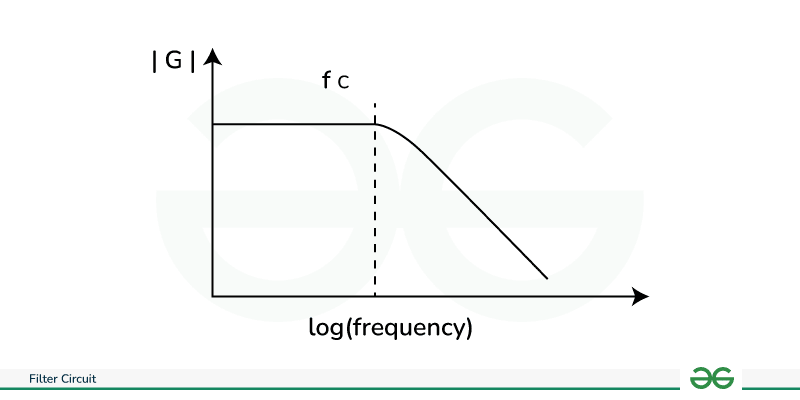An electronic circuit called a filter circuit is made to either pass or block specific frequencies from an electrical signal. It is an essential part of many electrical systems and applications because it shapes a circuit’s frequency response by blocking out undesired frequencies and letting in desired ones. Many electrical devices, including power supply, signal processing applications, audio systems, and communication systems, use filters.
Filters are circuits whose response is dependent on the input voltage’s frequency. Many crucial tasks in a system can be carried out by filter circuits. While resistors, capacitors, and inductors can also be used to create filters, op-amps, resistors, and capacitors are the main components of most filter circuits.
In this article, we will be going through the Filter Circuit, We will start our Article with the definition of the Filter Circuit, Then we will go through its Components and Filter Design, Then we will go through its types and At last we will conclude our Article with its Characteristics, Advantages, Disadvantages and Some FAQs.
What is a Filter Circuit?
An electrical circuit that selectively permits some frequencies of an electrical signal to flow through while blocking others is called a filter circuit. It acts as a gatekeeper for frequencies, making sure that only those that are wanted reach the output. A filter circuit is used in a rectifier circuit to eliminate or filter out the AC components. A filter circuit is a device that permits the D.C. For successful implementation in a variety of electronic systems, a thorough comprehension of their guiding principles and meticulous evaluation of design parameters are essential. In a variety of electronic applications, filter circuits are essential for modifying and enhancing electrical signals.

Filter-Circuit
The components of the rectified output to reach the load while removing the A.C. components from it. An LC filter circuit is a type of filter circuit that typically consists of an inductor (L) and a capacitor (C). An inductor only permits D.C. to flow, while a capacitor only permits A.C. to do so. Thus, the A.C. component of the rectified wave can be efficiently filtered out using an appropriate L and C network.
Why Do We Need Filters?
- In high-performance stereo systems, filter circuits are frequently required because, in order to achieve the highest possible sound quality and power efficiency, specific audio frequency ranges must be increased or suppressed.
- Noise Reduction: To remove undesired noise or interference from a signal, filters are frequently utilized. This is essential for applications requiring a clean signal, such as audio processing and communication systems.
- Signal smoothing: Filters are employed in many electrical systems, particularly power supply, to reduce fluctuations in the signal and produce an output that is more steady and continuous.
Components of a Filter Circuit
The components of a filter circuit are as follows:
- Resistor
- Capacitor
- Inductor
Resistor (R)
Function: The circuit’s current flow is managed by a resistor. It is frequently used in filter circuits to set the time constants in conjunction with capacitors.
Symbol: The symbol of resistor is given below with its representations.

Resistor
Capacitor (C)
Symbol: The symbol of Capacitor is given below with its representations.
Function: Electrical energy is stored and released by capacitors. Capacitors are frequently employed in filter circuits to pass AC signals while blocking DC signals.

Capacitor
Inductor (L)
Symbol: The symbol of Inductor is given below with its representations.
Function: Inductors store energy in their magnetic fields and resist changes in current. They are frequently employed in filter circuits to allow high-frequency signals to be blocked and low-frequency signals to be passed.

Inductor
Filter design techniques
- Do a Component Value Calculation: Determine the values of the resistor, capacitor, and inductor using the applicable formulas, taking into account the desired cutoff frequencies, bandwidths, and filter orders.
- Tools for Simulation: Before implementing filter designs, validate and optimize them using circuit simulation tools such as SPICE.
- Tolerances for Components: Throughout the design process, take into account practical constraints and component tolerances.
- Choose the Filter Order: In order to get the appropriate roll-off characteristics, select the filter sequence while keeping performance .

Filter-Design-Technique
Types of Filter Circuits
- Low-Pass Filter (LPF)
- High- Pass Filter (HPF)
- Band-Pass Filter (BPF)
- Band -Stop Filter (BSF) or Notch filter
Low-Pass Filter (LPF)
An electronic circuit known as a low-pass filter (LPF) attenuates signals higher than the cutoff frequency while permitting signals lower than the cutoff frequency to pass through. LPFs are frequently employed in electrical systems to ensure that only the intended low-frequency components reach the output by removing or reducing high-frequency noise, undesired harmonics, and interference.
Cutoff Frequency (fc): The cutoff frequency, often known as f c, is an important parameter that indicates when the filter starts to attenuate the input signal. While frequencies over the cutoff are gradually muted, frequencies below it are permitted to pass through with little attenuation. The cutoff frequency is measured in hertz (Hz) and is commonly represented as f c.
Filter Slope/Roll-off: The filter’s roll-off, or how quickly it attenuates frequencies above the cutoff, is measured. Decibels per decade (dB/decade) or decibels per octave (dB/octave) are the units of measurement. The rate at which higher frequencies lose amplitude as they approach the cutoff frequency is determined by the slope.

Low-Pass-Filter
High-Pass Filter (HPF)
An electronic circuit known as a high-pass filter (HPF) attenuates signals with frequencies lower than the cutoff frequency while permitting signals with frequencies greater than the cutoff frequency to pass through. High-pass filters (HPFs) are used in many electronic applications to emphasize a signal’s high-frequency content and to remove or decrease undesired DC offsets and low-frequency components. The main elements and features of a high-pass filter are as follows:
Cutoff Frequency (fc): The frequency at which the filter starts to attenuate the input signal in an HPF is known as the cutoff frequency, just like in a Low-Pass Filter. While frequencies over the cutoff frequency pass through with little attenuation, those below it are gradually muted. The unit of measurement for the cutoff frequency (f c) is commonly hertz (Hz).
Filter Slope/Roll-off: The filter slope, sometimes referred to as roll-off, is the speed at which frequencies below the cutoff are attenuated. Decibels per decade (dB/decade) or decibels per octave (dB/octave) are the units of measurement. The slope controls the rate at which lower frequencies lose amplitude as they approach the cutoff frequency.

High-Pass-Filter
Band-Pass Filter (BPF)
A Band-Pass Filter (BPF) is an electrical circuit that attenuates signals outside of the passband while permitting signals inside the passband to pass through. Two cutoff frequencies define the band-pass filter: a lower cutoff frequency (low f low ) as well as a higher cutoff frequency (high f high). The passband is formed by the frequencies that are passed with the least amount of attenuation between these two cutoff points. The main elements and features of a band-pass filter are as follows:
Center frequency: The geometric mean of the lower and higher cutoff frequencies determines the center frequency, which is the midway of the passband. Determining the core frequency at which the filter responds best is a critical parameter.
The bandwidth : The band-pass filter’s bandwidth is the width of the frequency range within which signals can flow through with the least amount of attenuation. The difference between the upper and lower cutoff frequencies is how it is defined.
f high − f low BW = f equals ⁛ high − ⁰ low

Band-Pass-Filter
Band -Stop Filter (BSF) or Notch filter
Let some frequencies pass through while blocking others. It’s helpful in removing interference from a particular frequency. Since power is the primary quantity of concern, the transfer function of a circuit is typically stated on a logarithmic scale in dB. A filter is characterized by :
Center frequency (f c): The midpoint of the lower and upper notch frequencies is the center frequency of a notch filter, just like in a band-pass filter. Determining the core frequency at which the filter responds best is a critical parameter.
Bandwidth (BW): The width of the frequency range in which signals are rejected or muted is the band-stop filter’s bandwidth. It is described as the difference between the frequencies of the upper and lower notch:
f high − f low BW = f equals ⁛ high − ⁰ low

Band-Stop-Filter
Digital Signal Processing Filter
A digital processor is used by a digital filter to compute numerical values based on the signal’s sampled values. A specialized DSP (Digital Signal Processor) chip or a general-purpose computer like a PC could be the processor. An ADC (analog to digital converter) must first be used to sample and digitize the analog input signal. The processor receives the generated binary numbers, which are successively sampled values of the input signal, and uses them to perform numerical calculations. Usually, the input numbers are multiplied by constants in these computations, and the products are then added. The filtered signal’s sampled values, which are now the result of these calculations, are output through a DAC (digital to analog converter) if necessary to return the signal to analog form.

Digital-Filter
Characteristics of Filter Circuit
- Diminishment : This describes how much the signal amplitude is reduced at particular frequencies. Attenuation slopes within the stopband vary throughout filter types and orders. Sharper transitions between the passband and stopband are produced by steeper slopes, although the transient response may also exhibit ringing, or oscillations.
- Phase Transition: The output signal experiences a phase shift as a result of the filter circuits, which causes the output wave to appear slightly later than the input. In some situations, this frequency-dependent shift may compromise the integrity of the signal.
- Arrangement: This is a reference to how many reactive parts (inductors and capacitors) are employed in the filter design. Although higher-order filters require more components and result in larger phase shifts, they feature quicker transitions and steeper attenuation slopes.
Advantages of Filter Circuit
- Accurate Signal Control: By selectively passing or blocking particular frequencies, filter circuits enable us to produce a signal that is clearer and more defined. This is important for applications such as audio processing, where we wish to highlight specific frequency ranges or eliminate undesirable noise.
- Enhanced Performance: Filters can improve the performance of a variety of systems by eliminating undesirable frequencies. For instance, removing AC ripple from power supply guarantees smoother DC output, which improves linked devices’ performance.
- Enhancement of Signal: Certain frequency components can be enhanced via filters, enhancing the signals’ overall quality.
- Personalization: Filters provide versatility in signal processing by being able to be created and altered to fit individual application requirements.
- Broad Range of Uses: Filter circuits are used in many different industries, such as digital signal processing, audio, radio, telecommunications, and power electronics. Because of their adaptability, they are essential components of contemporary electronics.
Disadvantages of Filter Circuit
- Component Tolerance: Owing to manufacturing tolerances, component values may differ slightly, which could have an effect on the filter’s performance and necessitate calibration.
- complicated Circuitry and Careful Design are Needed for Advanced Filters: Filters with numerous bands or abrupt cut-off frequencies require more complicated circuitry and careful design, which raises the implementation’s cost and difficulty.
- Active Filters’ Nonlinearities: Performance may be impacted by the introduction of nonlinearities by active filters, particularly those that employ operational amplifiers.
- The amount of power used in active filters: Because they use op-amps, active filters may use more power than passive filters.
- Loss of Signal: Since filters naturally suppress undesirable frequencies, there is some loss of signal in the desired band. For some applications, it is essential to minimize loss in exchange for better signal clarity.
Applications of Filter Circuits
- Anti-Alias Filtering : Because digital systems may only represent a signal at specific points in time, aliasing is a phenomenon that occurs.
- Noise Rejection : All of the frequencies present in a circuit’s components contribute to noise generation. This implies that the output of a circuit that responds to a smaller frequency range will be less noisy. Thus, filters that restrict the frequency range in their output can be helpful in reducing the quantity of noise.
- Interference Rejection : It is feasible to minimize interference by a factor of 400 without weakening the signal at 500 Hz by using a band-pass filter with a characteristic frequency of 500 Hz.
Difference Between Active Filter and Passive Filter
|
Basis for Comparison
|
Active Filter
|
Passive Filter
|
|
Material
|
active parts like as transistors and op-amps
|
passive parts, such as capacitors, resistors, and inductors, etc.
|
|
Cost
|
Expensive
|
cheap
|
|
Circuit intricacy
|
More complex
|
Less complex
|
|
Weight
|
Low Weight comparatively
|
bulkier since inductors are present.
|
|
Q factor
|
high
|
very low
|
|
Power Supply
|
required
|
not required
|
Conclusion
In summary, filter circuits are essential for modifying the frequency response of electronic systems, giving engineers the ability to regulate and work with signals according to their frequency composition. There are four different types of filters: band-pass (BPF), high-pass (HPF), low-pass (LPF), and band-stop (BSF). Each kind has a specific use in a range of applications. Filter circuits are essential components of electronics that improve the effectiveness and caliber of signal processing for a variety of uses. For successful implementation in a variety of electronic systems, a thorough comprehension of their guiding principles and meticulous evaluation of design parameters are essential. In a variety of electronic applications, filter circuits are essential for modifying and enhancing electrical signals.
FAQs on Filter Circuit
What is a filter circuit?
An electronic circuit that attenuates or blocks certain frequencies while permitting others to flow through is called a filter circuit. By either permitting just particular frequencies (bandpass filter) or blocking certain frequencies (low-pass or high-pass filters), it is used to alter the frequency response of a signal.
How can I select the best filter circuit for the purpose I’m using?
The desired result and the frequency characteristics of your signal must be taken into account while selecting the appropriate filter circuit. Assess if you need to provide a bandpass effect, block particular frequencies, or pass others. To ensure compatibility with the entire system, take into account additional aspects such as roll-off rate, impedance matching, and filter order (degree of filtering).
What constitutes a filter circuit’s essential parts?
- Resistors: They alter voltage levels by resisting the flow of current.
- Capacitors: Modify signal frequencies by storing and releasing electrical charge.
- Coils of wire that store energy in a magnetic field and modify signal frequencies are called inductors.
- Operational amplifiers, often known as op-amps, are used to shape and enhance signals in active filters.
What distinguishes active filter circuits from passive filter circuits?
- Passive filters: These filter signals by using passive parts such as inductors, capacitors, and resistors. They are typically simpler and don’t need an external power supply, but their selectivity and gain may be limited.
- Active filters: To accomplish more intricate filtering tasks, these use active parts such operational amplifiers. Better selectivity, gain, and flexibility can be obtained with active filters, but they need an external power supply.
Share your thoughts in the comments
Please Login to comment...